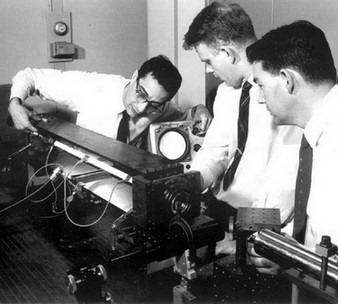Gizmodo has an interesting story about Bell Labs back in the 1930s.
In early 1934, Clarence Hickman, a Bell Labs engineer, had a secret machine, about six feet tall, standing in his office. It was a device without equal in the world, decades ahead of its time. If you called and there was no answer on the phone line to which Hickman’s invention was connected, the machine would beep and a recording device would come on allowing the caller to leave a message.
The genius at the heart of Hickman’s secret proto—answering machine was not so much the concept- perceptive of social change as that was-but rather the technical principle that made it work and that would, eventually, transform the world: magnetic recording tape. Recall that before magnetic storage there was no way to store sound other than by pressing a record or making a piano roll. The new technology would not only usher in audio cassettes and videotapes, but when used with the silicon chip, make computer storage a reality. Indeed, from the 1980s onward, firms from Microsoft to Google, and by implication the whole world, would become utterly dependent on magnetic storage, otherwise known as the hard drive.
Soon after Hickman had demonstrated his invention, AT&T ordered the Labs to cease all research into magnetic storage, and Hickman’s research was suppressed and concealed for more than sixty years, coming to light only when the historian Mark Clark came across Hickman’s laboratory notebook in the Bell archives.
“The impressive technical successes of Bell Labs’ scientists and engineers,” writes Clark, “were hidden by the upper management of both Bell Labs and AT&T.” AT&T “refused to develop magnetic recording for consumer use and actively discouraged its development and use by others.” Eventually magnetic tape would come to America via imports of foreign technology, mainly German.
AT&T firmly believed that the answering machine, and its magnetic tapes, would lead the public to abandon the telephone.
Photo by photonics.usask.ca.
